Peter Ireland – 3 June, 2011
Maiden Aotearoa, therefore, signals a Great Leap Forward, if not actually a miraculous event: contemporary photography by four Maori women artists. This modest – but terrific – show could be a more accurate signifier of what’s been happening here over the past forty years than, say, the much heralded re-opening of the Auckland Art Gallery later in a few months’ time.
Wellington
Vicky Thomas, Sarah Hudson, Suzanne Tamaki and Aimee Ratana
Maiden Aotearoa,
curated by Reuben Friend
21 May - 26 June 2011
It’s exactly forty years since the Auckland Art Gallery mounted a survey exhibition called New Zealand Young Contemporaries, a show comprising the work of artists across the usual art media, including the then very contemporary medium of video. Looking back, it was an interesting time-piece, but perhaps its most startling aspect now is that it featured not a single Maori artist. There were few contemporary Maori artists to draw on then - and the few that were seemed embarrassingly more Nuhaka than New York - and, besides, it wasn’t all that long since an authority such as Hirini Moko Mead had declared there could be no such thing as “contemporary Maori art”.
In 1971 contemporary Maori artists were rare enough - even rarer than women artists - and Maori photographers virtually unheard of. There were pioneers such as John Miller, of course, but in those days the labels had them down as “documentary photographers”, not “contemporary Maori artists”. Maiden Aotearoa, therefore, signals a Great Leap Forward, if not actually a miraculous event: contemporary photography by four Maori women artists. This modest - but terrific - show could be a more accurate signifier of what’s been happening here over the past forty years than, say, the much heralded re-opening of the Auckland Art Gallery later in a few months’ time.
These four sisters are doing some very sassy, stylish and challenging stuff. It’s wahine-toa (women of strength) with attitude. Aimee Ratana leads off with a re-showing of work first seen in Whakatane in 2008 and now, enterprisingly, part of the Museum’s collection there. It’s a series of 26 works, collectively titled Toku Tuhoetanga, including several of her own images but most of them sourced from the Whakatane Museum’s collections of historical imagery relating to Tuhoe’s struggle to retain their land and identity. There’s a strong sense that these appropriated images are hers too, of course. To emphasise their historical connection they’ve all been framed in faux, oval, oak-like frames, and clustered as in many wharenui. It’s a sobering and telling visual survey of a long trail of broken promises, injustice, frustration and anger that’s far from ended.
Suzanne Tamaki’s perhaps best known as a fibre/textile artist, but her contribution to Maiden Aotearoa consists of two very large photographic images (1.5M x 1M), taken by Norman Heke. (Mervyn Williams made Gordon Walters’ prints, so don’t complain about authorship and authenticy.) Each 2011 image shows the same Maori woman with a moko kauae (chin tattoo) dressed up in very elaborate historical garb, standing in an anonymous studio situation. The one on the left, For God, For Queen, For Country is an operatic image of colonized Maori woman - wearing a long “Maori-fied” Union Jack dress, a New Zealand flag draped around her neck, a decorated top hat on her head. Her accessories are lacy-frilled gloves and an elaborate pearl necklace. She stands proudly, gazing directly at the viewer. The one on the right, For Maori, For Sure, shows her hatless but wearing the same dress, the flag now held in her left hand, falling to the floor. In her right hand she holds a pair of scissors, mere-like. The necklace has gone, replaced by a pounamu toki (wedge-shaped pendant). The stance and gaze remain the same. She is still colonized but has taken control. You better watch those scissors, bro.
This long description does no credit to the impact of these two photographs, which tend to dominate the gallery, rather like the pair of royal portraits in the ballroom of Government House. Maybe that’s what this wahine-toa had in mind? There’s no need for any thrones in front of these photographs.
Maiden Aotearoa’s most overt reference to the concept of wahine-toa are Vicky Thomas’s two works: one a five-part sequence - Miss Appropriate of 2004 - and the other a dauntingly powerful self-portrait. The sexy sequence cocks a snook at the 19th century tradition of the Maori Belle’s static, head and shoulders pose. Thomas’s wahine is viewed from the waist down, the lower torso sporting a vivid red under-skirt beneath a very mobile piupiu, the agile feet clad in black patent-leather stiletto heels. This belle’s ringin!
But, before seduction has a chance to kick in, you’re confronted by her Self Portrait #3. More than double life-sized, this head and naked shoulders image depicts the subject with chin slightly raised, the traditional response of the powerless to a police mugshot, the stare similarly challenging, emphasized by eye-shadow a kind of bruised blue. The accessories start with silver “bangle” earrings (another outsider signature), a pounamu ring, then - the piece de resistance - a hand-held black revolver resting on her upper chest. The message is, unmistakably, Don’t fuck with me, mister. These sisters aren’t gonna take no more shit.
Te Papa’s current ponderous and confused E Tu Ake: standing strong exhibition has, as one of its fourteen themes, the notion of mana wahine, represented largely by two early ‘70s paintings by Robyn Kahukiwa. The Museum’s publicity for the show - destined for Paris later this year - emphasises a “vibrant”, living culture. How much more vibrant it might have been had this work of Thomas’s been included: it’s as worthy as Kahukiwa’s but has the added advantage of style and wit, something more likely to engage Parisians in their perception of what a cultural vibrancy might actually mean here, now in Aotearoa.
Hudson’s two 2010 works reference 19th century photography too, the “Maori Belle” postcard tradition more specifically. Her - and the curator’s - thesis pretty much is: these sisters did take shit. He writes in the brochure: “Sarah Hudson was motivated to investigate historic representations of the ‘Maori maiden’ after finding antique postcards featuring members of her own whanau (family). For Hudson the anonymity of the sitter was the most damaging and chilling aspect of these images. Neglecting to record the subject’s personal details, the early colonial photographer often re-labelled the sitter with romanticised, ethnographic [?] titles such as Maori Beauty, Maori Princess or Maori Girl. In this way real people were reduced to aesthetic objects - nameless commodities created for the viewing pleasure of the Western, and presumably male, gaze.” These assertions appear in slightly different form in a folder adjacent to the show: “Inauthentic and incomplete, such images can be viewed as another form of colonial plunder where the photographer has robbed the sitter of her identity and commodified her image for Western consumption.” (Both artist and curator complain about anonymity, but oddly in these circumstances, the brochure essay is unsigned and the origin of the folder’s contents unidentified. Hello?)
The basic distinction between an ideological stance and historical study is that the latter relies much more on actual evidence. But a few facts stirred together with compelling beliefs is a powerful brew, and one that more rigorously-derived facts can have a hard time countering.
Firstly, it was common enough practice that most 19th century colonial portraitists identified all their sitters with a reference number rather than naming them. Applying the names was left up to the sitters since that was more naturally their business. Of the relative few that remain, there are some extant registers, such as W F Crawford’s in Gisborne, where the names are listed alongside the numbers, but that appears to be fairly unusual. Even a punctilious practitioner such as Frank Denton in Whanganui relied on a numbering system for basic studio identification. Of course, the studio invoicing system had the names and addresses, but very little of this material survived for more than a few useful years. Commercial photographers were businessmen not archivists.
Secondly - again Denton can be cited here - although some photographers had a commercial line in what now may be considered a form of racial stereotyping, there is no evidence whatever that any of their subjects were forced into the studios, compelled to don the frequently inappropriate studio props, or be anything other than largely compliant in the process. Any assumption that Maori weren’t aware of the exact nature of the transaction must raise questions more serious than the implications of any alleged “colonial plunder”. Consider a modern equivalent: it’s not uncommon for fashion scouts, agents and fashion photographers to approach attractive young women - and men - in the street on the basis of their fashionable looks and deportment - a kind of stereotyping, if you insist - and sign them up for work. It’s rare for their names to appear in subsequent advertisements but it’s doubtful whether they spend their evenings crying into their dinners fretting about being “reduced to aesthetic objects” or “nameless commodities”.
Thirdly, the matter of this late reference to that ‘80s chestnut, “the male gaze”. The force of this notion is predicated on two very historically questionable assumptions: that there is no such thing as “the female gaze”, and that any attraction to human physical beauty must necessarily be voyeurism. Any unpacking of the past involving a puritanical nannyism may bring comfort to artists and curators but isn’t going to get the rest of us very far in understanding the complex historical interactions involved.
Fourthly, use of the adjective “inauthentic” is predicated on a firm notion of what’s “authentic”. Discussion of this inevitably becomes a battle-ground of competing ideologies. Any historian worthy of the name wisely steers clear of running around applying “authentic” and “inauthentic” labels to artifacts. Which label, for instance, applies to a mid-19th century korowai (cloak) with woollen thrums? Or, more pertinently, would a whanau rediscovering a connection with one of Frank Denton’s “Maori Belles” reject it on the grounds of “inauthenticity”? Yeah, right. History may often be foolish but sometimes it can be forgiving too.
What’s often overlooked in these ideologically-driven assertions is that, but for these evil colonial photographers taking their pictures, the subjects of them might otherwise have largely disappeared, even within the awesomely comprehensive system of whakapapa. Having witnessed the process of local hapu recognizing and reclaiming many subjects in the W H T Partington photographic collection acquired by the Whanganui Regional Museum in 2002 - Partington a common studio photographer with the usual box of tricks: korowai, assorted feathers, pounamu pendants etc., “inauthentic” as - it kindles an impression that, for all their real or alleged failings, these maligned colonial photographers left a repository of images without which we would all be much the poorer. That impression is called The Bigger Picture. Institutions such as the City Gallery need to be a little more rigorous in raising their sights so that this panorama becomes part of their project.
Peter Ireland
Recent Comments
Andrew Paul Wood
The vast proliferation of female artists since the 1970s long ago mean that it became impossible to assume an anonymous ...
Peter Ireland
Nealie asks why I should think the issue of the male gaze is "an 80s chestnut", and yet the only ...
John Hurrell
Old or recent, Toni, it is all up for debate. Good to have your contribution.
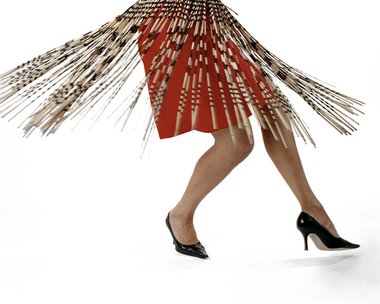
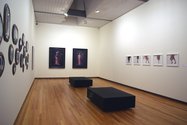

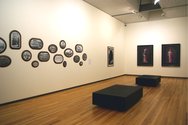

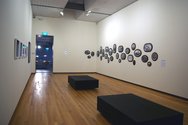
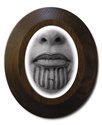
 Two Rooms presents a program of residencies and projects
Two Rooms presents a program of residencies and projects Advertising in this column
Advertising in this column



This Discussion has 22 comments.
Comment
John Hurrell, 9:58 p.m. 4 June, 2011 #
To continue the thread from Mark Amery's E Tu Ake (at Te Papa) review and the discussion with Martin,....Martin you must have supernatural powers. You predicted on Thursday what Peter was going to write (above) on Friday.
Now the term 'Maorified'. Is it funny, offensive, perhaps a little clumsy, legit or something else?
Are there issues with it?
John Hurrell, 3:52 p.m. 8 June, 2011 #
Thanks for the correction, though it would help the conversation to have your full name. Good to have your contribution.
Andrew Paul Wood, 6:01 p.m. 8 June, 2011 #
Unless there is another word that means "to appropriate or re-appropriate a non-Maori entity into a Maori context", I don't see a problem with "Maorified" - certainly not racist, but perhaps being ironic about the perception of Pakeha as always being ignorant of tikanga and Maoritanga. I can't think of a more appropriate word to apply to some of the PoMo hijinks of Michael Parekowhai and Peter Robinson.
Now, how do the "female gaze", the "Maori gaze", and the "wahine gaze" relate to each other?
Martin Langdon, 7:57 p.m. 6 June, 2011 #
not at all it almost seems like a borrowed term which does talk about another dialogue that happens all the time in art and life .
Peter Ireland, 11:33 p.m. 9 June, 2011 #
Rather than suggesting endless permutations of the gaze category, I wish Andrew Paul Wood had grasped my point that the very category itself is perhaps now redundant. Maybe the gaze craze was actually pretty redundant in the '80s, weighed down as it was by ideological baggage predicated on Eurocentric heterosexuality and a somewhat puritanical insistence that any sort of looking was voyeurism. He's missing the point of these wahines' gaze too - it's the active gaze back of women who refuse to be objects or victims. A gaze having little to do with sexuality it's more a case of wero, a ritual challenge to get a few racial equality issues sorted. Ironically, a failure to do so could be a form of negative voyeurism, a looking away.
Andrew Paul Wood, 7:01 p.m. 10 June, 2011 #
Perhaps, Peter, by suggesting the endless permutations of "the gaze" I was, in fact, questioning its relevance. However, I suspect "the gaze" will always be relevant unless all humanity evolves into bottle-grown beige asexual clones, cyborgs, or are extinct.
Perhaps, Peter, you are missing the point that Mana Wahine is not the same thing as Feminist Liberation in the Western sense, although the two are not mutually exclusive.
Martin Langdon, 9:47 a.m. 10 June, 2011 #
defending the colonial photographer - as if it was the indigenous person's fault that they neglected to insist to the photographer that they be portrayed as people, as opposed to ethnic specimens. I think the understanding of two separate ideals of 'common courtesy' would have existed at the time. I bet no in depth explanation of what was happening to the images was 'translated' (probably wouldn't translate well - as history has shown) to the subject, or should I say products. This time element is neglected in the rationale of the 'modern day' model. I think there is a real need to renegotiate the relevence of terms like female gaze or wahine gaze, as women are increasingly gaining power in many aspects of life - and in turn their power assertion of turning the gaze around and objectifing men is a reality. eg Play Girl, and Chippendale have sold out shows.
Martin Langdon, 9:51 a.m. 10 June, 2011 #
I for one am more enticed by this review to see the exhibition as to why it struck such a nerve with Peter.
Peter Ireland, 9:49 a.m. 11 June, 2011 #
What I can say about
Paine's comment is this: I'm reminded of my 6th form English teacher
who said that your opinions are as good as the reasons you give, and
Paine gives none. How can any sort of debate function if a recourse to
Wikipedia, of all things, is meant to lead somewhere? Did Judith
Binney, or does James Belich, ever recommend Wikipedia to their
readers or serious history students? Such a course might be closer to
what a pol sci lecturer at Canterbury once called "spray-on
conclusions from an aerosol mind"
About Langdon's comment I say: My wish to debate the issues shouldn't mask the
fact that I think Maiden Aotearoa is a terrific and probably
significant show vis a vis the history of NZ exhibition culture.
Langdon seems to be applying early 21st century understandings and
judgements to a 19th century situation, and that's going to shed light
only on the impossibility of this out-of-syncness going anywhere.
Historical enquiry isn't an opportunity for us to apply superior (or
any) judgements from hindsight: it's the attempt to understand the
nature of processes and transactions on their own terms. A LOT harder,
admittedly, but a necessary enterprise.
Ralph Paine, 1 p.m. 11 June, 2011 #
Yes, I’m sure we all appreciate and respect the research methodologies of Belich, Binney, et al. And I’m sure also we appreciate and respect your research methodologies Mr Ireland. But when you go and make a reactionary and un-researched statement to the effect that the gaze is irrelevant as a concept for contemporary thought, then a rejoinder is required. That I directed readers to Wikipedia: Gaze rather than to Foucault’s writings on the panopticon or Laura Mulvey’s “Visual Pleasure in Narrative Cinema” or Annette Kuhn’s The Power of the Image: Essays on Representation and Sexuality was simply an expediency. For at said Wikipedia reference one discovers these references plus many more. But one also discovers there an extremely interesting discussion between various parties about the reference and its construction, and thus one is given a very quick indication of just how important and relevant the gaze remains as a concept.
Blogging is not historiography; it’s writing that happens at rather rapid speeds on the internet and thus Wikipedia is a good and immediate reference. But that aside, Wikipedia seems to me an amazing experiment in (& of) human consciousness and knowledge, one somewhat removed from the control of academic elites.
Peter Ireland, 5:27 p.m. 11 June, 2011 #
Thanks for the clarification of your view. I agree with you that
Wikipedia's a very interesting experiment. But it's fundamentally a
repository of what we already know. The debate about aspects of Maiden
Aotearoa is trying to sort out what we don't know. What we thought we
knew about these complex issues is clearly inadequate, hence the
debate. In the pursuit of one it strikes me as being less than helpful
if terms such as "reactionary" are tossed around without
clarification. It's one of those words like "revisionist" which tell
more about the user's attitude than actually contributing much to the
debate. It was the source of my beef with David Eggleton on my own
blog http://www.peterskite.blogspot.com/ after he accused Damian Skinner of revisionism vis a vis his
essay on Brian Brake in the Te Papa book/catalogue.
Ralph Paine, 10:46 p.m. 11 June, 2011 #
It seems to me that by attempting as you do to use the work of these artists as a means by which to negate past efforts in exploring the gaze and its complex relations to both pleasure and power is precisely reactionary. It would have been far better to assert that the work acknowledges, builds on and transforms past efforts.
Your notion of ‘what we already know’ is beyond comprehension. However, my comments about Wikipedia were meant to indicate that the site is not a mere static repository but rather a place where knowledge is openly engaged with and is thus considered to be always in discussion.
Ralph Paine, 10:01 a.m. 28 June, 2011 #
Unhelpful towards what end? What starting point? What is the task that I should be lending my hand towards here? Why are 'left' and 'right' to be considered by the "artworld" as "trite notions." Please enlighten me more as to my stupidity.
The ends, the starting points, the tasks, the common names and concepts are not set by you John, or by Mr Ireland. I stand by what I said: Mr Ireland’s comments about the irrelevancy of the gaze as a concept for contemporary thought are highly reactionary. Why? Because they are enclosed within a text which attempts to use the work of a certain group of artists as a means by which to negate past efforts in exploring the gaze and its complex relations to both pleasure and power. It’s precisely this attempted NEGATION which defines things here as reactionary.
Ralph Paine, 2:46 p.m. 29 June, 2011 #
Am I in a time warp here or is someone tampering with the records?
John Hurrell, 4:21 p.m. 29 June, 2011 #
No Ralph,I corrected a typo - as I often do with these comments. Then I think you spotted the same typo and corrected it yourself, and posted a second version. This I then removed - as it was obsolete.
However maybe I missed something else that I should have spotted. Did I?
Ralph Paine, 4:47 p.m. 29 June, 2011 #
Sounds weird... I realised Monday am. that I'd replied to the main thread and not to your reply to an earlier comment of mine, so I posted again in the right place as a reply to you.
But now you've removed my earlier comment, your reply to it and my correctly positioned reply to yours and left my first incorrectly positioned reply.
Confused?
John Hurrell, 6:08 p.m. 29 June, 2011 #
Blimey you are right, but there are two (not three) missing. I wanted one to delete. A Content Management System headache.
Okay then, for readers curious to know what Ralph is responding to on 10.01 am 28 June, I had previously posted the following on the 26/6:
I wonder Ralph whether using terms like 'highly reactionary' is very helpful for this sort of conversation. It is as stupid as say me saying you are being 'politically correct'. Both expressions are blanket sneer terms that deny the potential complexity of any individual's political position. I would have thought any serious debate within the artworld avoids trite notions of 'left' versus 'right'.
Toni Nealie, 11:19 a.m. 3 December, 2011 #
I am interested in this exhibition, but the dialogue here serves as an exhibition in itself. The work is ignored, and a pissing match ensues over the critique.
Why is the "male gaze" an 80s chestnut? Judging my discussions taking place here in the U.S. it is still very topical. For example, I'm currently teaching a writing and rhetoric class at Columbia College Chicago where we read Berger, Sontag and others, and all types of looking are discussed. I also teach a media class, where the subject of the male gaze arises frequently when students are viewing advertising or other forms of mass media. The models are often very young, and students often raise issues of voyeurism and subjugation, unprompted. I recently took a graduate class in Victorian Illustrated Poetry where the male gaze, and female subversion of it, was strongly evident and discussed by the male teacher and diverse student body. I know from teachers at the School of the Art Institute, and from contemporary American artists, that the topic of the male gaze is far from exhausted.
Wikipedia may not be used as an academic source, but it's a fine way of quickly getting to the body of knowledge we all rely on to develop our own thoughts. I've just used it to quickly find a Walter Benjamin quote that I know is also sitting his Reflections on my bookshelf. If I want the idea quickly, I go to Wikipedia. When I use it in a piece of work, I quote from the source.
Peter Ireland, 9:01 p.m. 5 December, 2011 #
Nealie asks why I should think the issue of the male gaze is "an 80s chestnut", and yet the only writers she mentions are Berger, Sontag and Benjamin. Just how 80s is that?
Toni Nealie, 11:37 a.m. 3 December, 2011 #
I just realize that this is an old thread. I got a link to the exhibition on in Auckland.
John Hurrell, 1:45 p.m. 3 December, 2011 #
Old or recent, Toni, it is all up for debate. Good to have your contribution.
Andrew Paul Wood, 10:04 p.m. 6 December, 2011 #
The vast proliferation of female artists since the 1970s long ago mean that it became impossible to assume an anonymous artist was male, and thus reading a male gaze into an artwork (without checking the label) redundant.
Participate
Register to Participate.
Sign in
Sign in to an existing account.